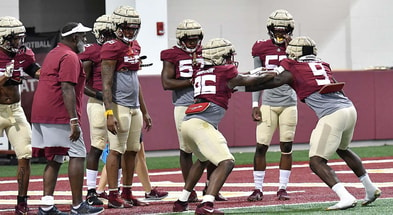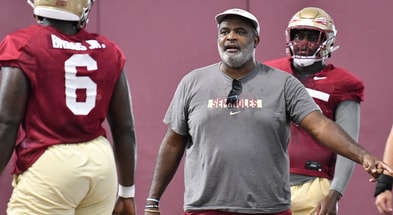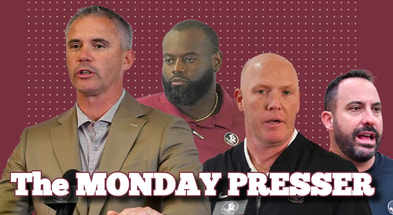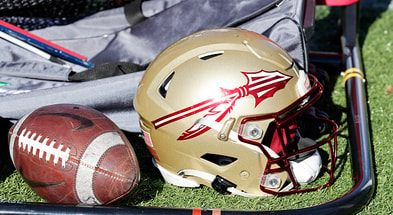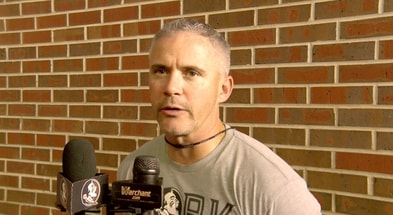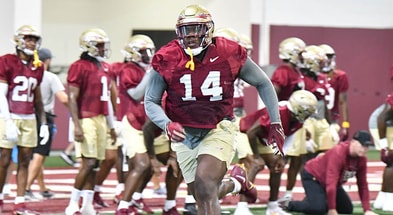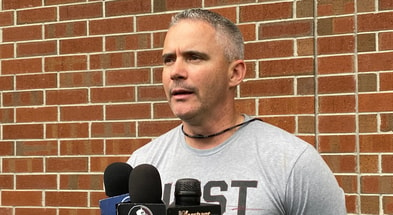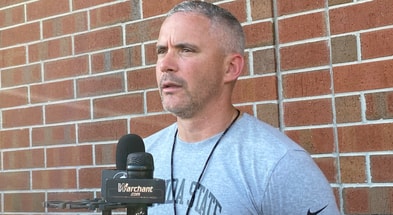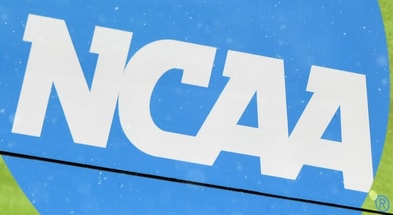Ira Schoffel: Just how seriously should the ACC take Florida State's frustrations?
“When someone shows you who they are, believe them the first time.”
It’s a safe bet that poet and civil rights activist Maya Angelou wasn’t thinking about college football when she first spoke those words, but they certainly apply in this space at this moment. And they have been running through my mind repeatedly since Friday afternoon.
Florida State athletics director Michael Alford and the university administration sent shock waves throughout the Atlantic Coast Conference – and the entire college sports landscape – on Friday when voicing their frustration concerning the ACC’s long-term media rights deal with ESPN.
Alford outlined in painstaking detail how poorly the conference’s TV revenue stacks up against the Southeastern Conference and the Big Ten, and he explained that Florida State actually generates about 15 percent of the ACC’s total TV revenue while receiving only about 7 percent of the money distributed.
“Something has to change,” Alford said during a meeting of the Florida State Board of Trustees.
It was a stunning development. Not because of the information cited – anyone who has been paying attention to college football for the past few years knows the ACC’s contract with ESPN is a disaster for Florida State, Clemson and any other school that desires to be successful in college sports – but because of the forum.
Alford and Florida State’s top administrators were well aware they were speaking in public. In an open meeting that was streamed live on YouTube for the world to see.
It was not an accident that Alford made his presentation where and when he did, and it wasn’t happenstance that the ensuing conversation between FSU trustees and the university’s general counsel broached the subject of leaving the conference. Even going so far as to discuss how much it would cost to bolt ($120 million without even addressing the ever-present Grant of Rights), and dismissively suggesting all that money could be made up with just a few years in the SEC or Big Ten.
So if we all agree this was intentional, then we have to ask ourselves the next question: What exactly were the Seminoles doing on Friday?
Does Florida State really have a plan for how it could get out of this conference? Have the Seminoles been told they have a home waiting for them in the SEC or Big Ten?
Or was this nothing more than saber rattling? Is all of Florida State’s strong talk just a bluff in hopes of pressuring the other ACC schools to agree to unequal revenue sharing?
And why is Florida State bringing this up publicly now, when these long-term TV revenue projections have been widely discussed for a year or more?
The easiest of those questions to address is the timing.
As we discussed in our first reaction video on Friday, the ACC held its winter meetings two weeks ago in Charlotte. And during those meetings, Florida State and Clemson officials continued their push for unequal revenue sharing. They pointed out how so much of the conference’s television revenue is generated by their two brands — Alford said Friday it’s about 24 percent between FSU and Clemson — and yet all 14 full-time league members split that money equally.
No decisions were made in Charlotte, but it’s fair to say Florida State officials didn’t walk away feeling confident the other schools were planning to give the Seminoles and Tigers a bigger piece of the pie.
And I think that’s precisely the reaction many of us have expected when the topic has been raised in the past: Why would schools like Boston College, Wake Forest and Syracuse willingly choose to give away millions of dollars each year when the ACC has a contract in place through 2036? A contract that also has a long-term “grant of media rights” tied to it, presumably meaning that any school who leaves will forfeit the television money it would generate for the next 13 years.
We use the word “presumably” because no one really knows for sure what would happen if the GOR were to be challenged in court. What we do know is that Florida State and other ACC schools have had attorneys examining every word of that contract — and studying all applicable case law — for months to figure out what arguments might be made for breaking it.
The only thing that seems certain right now is it would lead to a protracted legal battle.
Over the weekend, I reached out to Florida State Board of Trustees chair Peter Collins to see if he would shed any light on FSU’s position — particularly about the Grant of Rights, since that topic was not raised in the open forum.
This is what Collins said: “We have a very good handle on the grant of rights.”
Well, OK then.
We’ll all have to make our own assumptions about what that means, because Collins declined to elaborate. But he did open up a bit when I asked about Florida State drawing a line in the sand publicly on Friday.
Collins acknowledged that FSU officials have tried to address their concerns through proper channels with the conference and seen little movement.
“We’re going to continue to talk about it. And we’re going to continue to push,” Collins said. “We have to push. We have to do everything we can to take care of Florida State University. Our primary concern is not the ACC. Our primary concern is Florida State.”
As Alford detailed on Friday, ACC schools received about $42 million from the conference this past year, while schools in the SEC will soon be getting over $70 million annually and schools in the Big Ten around $80 million. And both of those conferences will get opportunities to renegotiate their contracts again before the ACC’s deal with ESPN expires in 2036.
It’s a staggering disparity, and one that Collins said will hurt all 20 of the Seminoles’ sports programs.
“We’re at a competitive disadvantage in the two sports (football and men’s basketball) that produce the revenue we use to fund every other program,” he said. “How are we going to keep competing at that level if we’re receiving $30 million less every year than the teams we are competing with? As we said in the meeting, it’s impossible.”
So what can the Seminoles do about it?
Well, we’ve already seen the first approach. They can continue pushing, privately and publicly, for a larger share of the ACC television revenue. An amount that makes it possible for them and Clemson to keep competing with the nation’s top programs in football.
Then it ultimately will be up to these other schools in the conference — with guidance from Commissioner Jim Phillips — to determine whether Florida State is bluffing the next time its trustees discuss leaving the ACC in an open forum.
I personally don’t believe unequal revenue sharing is a long-term solution for the ACC or any conference. At best, it’s a stop-gap measure — until either the landscape changes or the conference completely falls apart.
But only those other ACC schools can determine whether it’s an option at all. They’ll have to first ask themselves whether Florida State and Clemson (and any others) will be willing to write a $120 million check and potentially challenge the Grant of Rights in court. And then they’ll have to consider what happens to their league if that occurs.
Will they look like the Pac-12 without Southern Cal and UCLA? Will they look like the Big 12 without Texas and Oklahoma?
I don’t know all the cards Collins, Alford and the Florida State administration are holding. I can’t say for sure how willing they are to stroke a check with that many zeroes.
What I do think about quite often at times like this are those brilliant words from Maya Angelou: “When someone shows you who they are, believe them the first time.”
In 2009, I didn’t believe Florida State would force Bobby Bowden to retire until he was ready to go. The man resurrected this program from the ashes and took it on a journey so wonderful it will likely never be replicated. And yet once it was clear he couldn’t get them back on top — that he couldn’t keep them competitive with their biggest rivals — the Seminoles showed him the door.
In 2019, I didn’t believe Florida State would fire Willie Taggart after less than two years. Not because of fairness or because he needed more time to show what he could do, but because I didn’t think they could afford to pay a man nearly $20 million to not coach anymore. Particularly at a time when the athletics department was already in the red.
Yet the last time I checked, Taggart has been receiving payments of $290,000 each month from Florida State since the day he was fired. To not coach. And he will keep getting them until next January.
“When someone shows you who they are, believe them the first time.”
While it’s fair to ask how far Florida State is willing to go in this battle, we’d also be wise to consider the alternatives.
Does anyone believe the people who run this university are going to be held hostage for a decade or more and watch the sport of college football pass them by?
Is it logical to assume they will maintain the status quo while their most bitter of rivals — the Florida Gators — are bringing in at least $30 million more per year? And then pouring those resources into all of their programs, with which Florida State has to compete?
I don’t know where FSU is going to end up when all of this is said and done. But the idea that the messages the Seminoles delivered at Friday’s meeting were a stunt or a bluff?
Nah. These people have shown us who they are. We might be wise to believe them.
Contact managing editor Ira Schoffel at [email protected] and follow @iraschoffel on Twitter.
Talk about this story with other die-hard FSU football fans on the Tribal Council.





